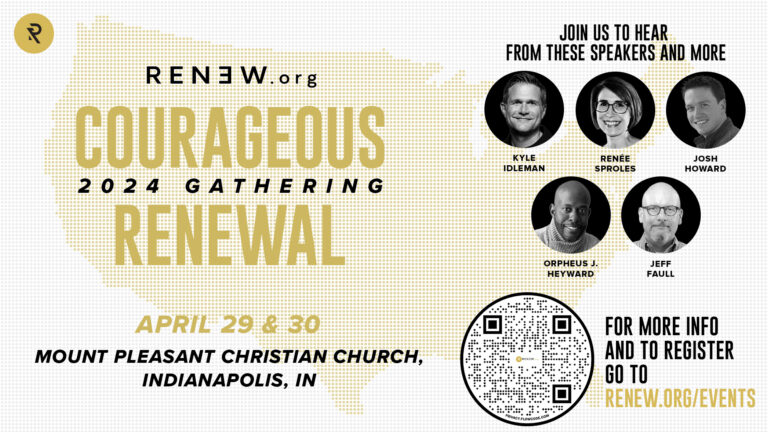The historicity of Jesus and the major events of his life have been corroborated by ancient historians, even those who were non-Christian (click here for part 1). We also know that the two major leaders who authorized Jesus’ death—Caiaphas and Pilate—were real people, and that they lived in the exact place and time Scripture says and had the exact role the Bible describes (click here for part 2). No respected historian or scholar disputes these facts.
Yet in Scripture, they are secondary truths.
The most important questions focus on whether Jesus actually died, was buried in a tomb, and rose from the dead.
Scripture states that these are three vital elements at the heart of something called “the gospel.” The word gospel simply means “the good news.”
Scripture tells us that one’s faith in the gospel determines whether a person is saved or not. That makes these three elements a big deal. They are the foundational beliefs of the Christian faith.
The apostle Paul was a Christian leader and one of the earliest known believers to have written about Jesus’ death, burial, and resurrection. He describes how important these elements are in 1 Corinthians 15:1-8. Notice carefully the first two verses.
Now, brothers and sisters, I want to remind you of the gospel I preached to you, which you received and on which you have taken your stand. By this gospel you are saved, if you hold firmly to the word I preached to you. Otherwise, you have believed in vain (I Cor. 15:1-2).
Paul tells us that the gospel determines the basis of your standing with God. “By this gospel you are saved.” So what again are the core elements of the gospel? Keep reading:
For what I received I passed on to you as of first importance: that Christ died for our sins according to the Scriptures, that he was buried, that he was raised on the third day according to the Scriptures, and that he appeared to Cephas, and then to the Twelve. After that, he appeared to more than five hundred of the brothers and sisters at the same time, most of whom are still living, though some have fallen asleep. Then he appeared to James, then to all the apostles, and last of all he appeared to me also . . . . (I Cor. 15:3-8)
So we see that this passage of Scripture establishes what is most important for Christians to believe. This suggests that not all the teachings of churches, leaders and Christians are essential. We are not told that we must believe that the Bible has no errors in order to have eternal life. We are not told that we must reject all forms of evolution. We are not told we must attend a certain church. Though there is a place for biblical teachings on these topics. But they are not essential. That place belongs to whether or not we will place our faith in Jesus and his death, burial, and resurrection.
So we come to a crucial question: what is the historical evidence for these elements?
Of all the experts in the world on the historicity of Jesus’ death, burial, and resurrection, two rise to the top as the premier subject experts. Gary R. Habermas, PhD and Michael R. Licona, PhD have devoted their lives to studying, teaching, and writing on the evidence for the resurrection. They have both been persuaded to follow Jesus by the evidences, and they summarize their encyclopedic work by asking skeptics to consider a “minimal facts approach.”[1]
Using their approach, we should only seriously consider historical facts that meet two criteria. First, there must be very strong objective, historical evidence supporting them. And, secondly, the evidence must be so strong that the vast majority of today’s scholars on the subject—including skeptical ones—accept them as historical facts.
In what follows, I am going to use the “minimal facts approach” to show that history verifies – by 1) data that is strongly evidenced and 2) by scholarly consensus (even skeptical ones) – that Jesus died by crucifixion, his tomb was empty after three days, and his earliest followers tenaciously believed he rose from the dead.
1. Jesus died by crucifixion
Scripture teaches that Jesus was crucified (John 19:16), between two criminals (Luke 23:33), just outside Jerusalem (John 19:20), near a garden which had a newly cut tomb (John 19:41).
What do we know about crucifixion in Jesus’ day? For one thing, we know that the Jews were no strangers to crucifixion. For example, just over thirty years before Jesus, the governor of Syria crucified 2,000 Jews.[2]
The ancient writer Cicero called death by crucifixion, “the most cruel and hideous of tortures,” and the historian Will Durant said that “even the Romans … pitied the victims.” Crucifixion was so awful that the Romans usually exempted Roman citizens and reserved it for slaves or rebels to discourage uprisings. “The pain was absolutely unbearable,” observes Alexander Metherell, M.D., Ph.D. “In fact, it was literally beyond words to describe; they had to invent a new word: excruciating. Literally, excruciating means ‘out of the cross.’”[3]
Although crucifixion was widely described in the literature from the time, it was not until 1968 that the actual remnants of a crucified person from a similar time and place were found. While working in Jerusalem, construction workers uncovered an ancient tomb. Inside the tomb they found a nail in knotted wood, piercing through an ankle bone. The discovery has been dated to the first century.
This is a picture of the discovery. I took the photo in The Israel Museum in Jerusalem.

The nail was left in the bone because the executioners—who typically reused nails after the crucified persons died—were unable to extract it. The nail was hammered into a hard knot in the olive wood of the vertical stake of the cross, which made the end of the nail bend and curl. So the nail, the ankle, and the wood knot were preserved together.[4]
The person about to be crucified would often carry the cross beam to the site, and then the cross beam would be placed on one of the trees (typically by the side of the road).[5] The following picture is a re-creation by archaeologist James Flemming of a cross likely resembling the one upon which Jesus was crucified.[6]

A Sample of What the Cross Looked Like
Since the same trees were used over and over again for crucifixions, they would have lost their green foliage. I worked with an artist to create a graphic that gives us an idea of what the cross looked like on the road just outside Jerusalem.

The biblical description of Jesus’ flogging and crucifixion has been analyzed by medical experts. From flogging and beating that preceded his crucifixion, to the nailing of the ankles (considered part of the feet) and wrists (considered part of the hands), Jesus was inflicted with great pain.[7] When a person was placed on the cross, he would have been in terrible pain, struggling to pull himself up to breathe, with muscular spasms and terrible dehydration.

The ancient writer Pseudo-Manetho described crucified victims as follows: “punished with limbs outstretched, they see the stake as their fate; they are fastened (and) nailed to it in the most bitter torment” (Apotelesmatica 4.198).[8]
In addition to the Bible, there are non-Christian ancient sources which tell us that crucifixion is how Jesus died. These include Josephus, Tacitus, and Lucian. We have other external sources (to the Bible and Christians) and ancient testimonies to Jesus’ crucifixion. For example, the authoritative Jewish Talmud tells us that this is how Jesus died. There are 5 key ancient and non-Christian sources:
- Josephus
- Tacitus
- Lucian
- Mara Bar-Serapion
- Talmud
As Habermas and Licona point out 1) the data on the crucifixion is strongly evidenced and 2) even non-believing historians accept it. The skeptical New Testament scholar John Dominic Crossan is typical of historians where he states that Jesus “was crucified is as sure as anything historical can ever be.”[9]
2. Jesus’ tomb was empty
The Gospel of Matthew states that, after Jesus died and was removed from the cross, Joseph of Arimathea wrapped Jesus’ body up and placed it in his tomb.
Joseph took the body, wrapped it in a clean linen cloth, and placed it in his own new tomb that he had cut out of the rock. He rolled a big stone in front of the entrance to the tomb and went away (Matt. 27:60-61).
Archaeologists have found that tombs in Jesus’ time have a distinctive style which was utilized only in the period from 37 B.C. through A.D. 70. Before and after that period, the Jews used different types of tombs. This is an interesting fact because there are biblical details about Jesus’ burial in a tomb which align with what historians of this period would expect.
Notice in the picture below a tomb from Jesus’ time, discovered recently during construction of a road in Israel. There have been around 1,000 of these tombs from the first century found in Israel. Notice the big stone in the front of the tomb that is pushed over the entrance.

Inside the tomb, there was typically a stone slab so that the wrapped-up body could be placed on that spot immediately following death. An artist created the following picture from scenes inside first century tombs.

Then, approximately a year later, after all the flesh had decayed, the bones would be placed in a smaller ossuary (i.e. bone box). The ossuary was then placed in one of the niches to the side and the same tomb would be used for other family members.
From as late as A.D. 136, Christians identified the place where they believed Jesus was crucified and buried in Jerusalem. The Church of the Holy Sepulchre—pictured below—was built over that location.

There is a strong historical and archaeological tradition demonstrating that this church building was built on the right spot. It was easily identified in the time of Jesus to the residents of Jerusalem as Golgotha, which meant “the place of the skull” (Matt. 27:33). The location was still recognized by A.D. 136 when the Roman Emperor Hadrian put down a rebellion in Jerusalem (the “Bar Kokhba Revolt”) and remade it into a Roman city (“Aelia Capitolina”). In the process, Hadrian destroyed many of the religious sites. He also built a temple to the pagan god Venus atop the traditional spot of Golgotha, likely in an effort to stop Christians from gathering to worship at this location.
The archaeologist Shimon Gibson gives a summary description of this evidence:
“We may surmise that the exact situation of Golgotha was passed down from generation to generation among Jesus’s supporters, even when the place itself came to be hidden beneath the pavement of the Forum and Temple of Venus in Aelia Capitolina, which was built after 135 CE to replace the ruins of Jerusalem. This is clear from Eusebius, an erudite and learned scholar writing in the late third century, who noted that the ’Place of the Skull‘ was still ’pointed out in Aelia‘ on the northern side of Mount Zion, indicating that knowledge of the whereabouts of Golgotha had been maintained from 70 CE and until his day.”[10]
So we have good reason to think that Golgotha was known from the time of Jesus and up until the time of Eusebius (the historian) in the early 300s. Then in the time of Eusebius, Constantine and the leaders of the Roman Empire built a church building on that exact spot.
Inside the church building, they marked the location that they believed was the tomb of Jesus. It was supposed to be under a shrine called the Edicule inside the building. The Edicule is pictured below (with people lined up to go inside).

But there were historical questions. Did Constantine’s officials mark a first century tomb? How did they know it was Jesus’ tomb? After so many centuries, are we sure we are looking at the spot originally marked in the 300s? No one had been able to investigate the enclosure built over the tomb inside the Edicule because it had been sealed over for many centuries.
But an excavation was completed in 2016. National Geographic filmed and documented the whole process and they demonstrated that the location was the one Eusebius identified in the early 300s. It was scientifically dated to around A.D. 345. The archaeologist Martin Biddle summarized the findings this way: “Obviously that date is spot-on for whatever Constantine did,” he said. “That’s very remarkable.”[11]
Although it is impossible to know for sure if Constantine’s officials identified the exact tomb of Jesus in the early 300s, we have every reason to think we have access to the location they believed was Jesus’ tomb. We are also able to know what His tomb must have been like, for archaeologists have been able to identify and verify other first century tombs inside the Church of the Holy Sepulchre. Here is a video taken inside the church building that shows what the first century tomb area looked like.
The picture below is one I took inside that first century tomb. Jesus would have been placed within a tomb chamber like this one.

Whichever tomb ends up being the right one, the historical argument for the empty tomb itself is strong.
There are three historical factors that support what the Gospels teach about the empty tomb. The evidence is exhaustively documented by Licona and Habermas.[12]
The first factor is the Jerusalem factor. It would have been very difficult to proclaim that Jesus rose from the dead, in a known area of the city, if Jesus were still in the tomb. The enemies of the disciples would have simply produced his body as contrary evidence. “Here is the body,” they could have said. But they did not. Paul is surely referring to this evidence and more when he states the following to King Agrippa in Acts 26:26: “The king is familiar with these things, and I can speak freely to him. I am convinced that none of this has escaped his notice, because it was not done in a corner.”
Agrippa and the other leaders were well informed about Jesus. As non-believers they had trouble explaining the empty tomb and how thousands were becoming Christians within the first fifty days of the crucifixion (Acts 2:41). How would the Jewish leadership respond?
This leads us to the second factor—the enemy factor. If someone who is biased against you and hates you states that you are an honest person, it is likely that people will listen to their perspective, since their bias would make this a difficult admission. Jesus’ enemies admitted that his tomb was empty after his burial. The earliest critics of Christianity, both in the Bible and in history, accused Jesus’ disciples of stealing the body. This was a common statement made from the time just after the crucifixion in A.D. 30 (Matt. 28:12–13) and on up through A.D. 150-200 (Justin Martyr, Trypho 108; Tertullian, De Spectaculis 30).[13] No one in early history claimed Jesus’ body was left in the tomb. “The disciples must have stolen the body,” they said.
And there is one more factor.
The third factor is the testimony of the women. Women were not accepted as witnesses in Israel in the time of Jesus. Culturally, they were considered unreliable witnesses in trials. The first century historian Josephus stated Jewish policy succinctly: “Let not the testimony of women be admitted, on account of the levity and boldness of their sex” (Antiquities of the Jews IV.8.15.§219).
But the Gospels tell us that women were the first witnesses of the resurrection. Mark 16:1-4 describes it this way:
When the Sabbath was over, Mary Magdalene, Mary the mother of James, and Salome bought spices so that they might go to anoint Jesus’ body. Very early on the first day of the week, just after sunrise, they were on their way to the tomb and they asked each other, “Who will roll the stone away from the entrance of the tomb?” But when they looked up, they saw that the stone, which was very large, had been rolled away.
Strange as it may sound, if the Gospel writers had been making it up, using the testimony of women would be an unwise move. But for modern readers who know how unwise it would have been, the witness of the women actually makes the opposite case. Why say that the women were the first witnesses? The only reason would be that that’s the way it really happened. Thus the testimony of the women provides objective evidence for the historical data. The Gospel writers were simply trying to give us the facts, without twisting them to fit Jewish expectations.
So we conclude that the facts as we know them support the Gospel accounts. Thus, Habermas and Licona conclude that the historical data is strongly evidenced and there is a scholarly consensus (even among skeptics) that the tomb was empty.

3. The disciples believed he rose from the dead
The persons who were in the best position to know if Jesus truly rose from the dead were his disciples. The historical data unequivocally shows that they were convinced, at the deepest conscious levels, that Jesus rose from the dead. It may surprise you to learn why this was unexpected.
Firstly, it was contrary to Jewish beliefs in the first century to think that the Messiah would die and then rise from the dead. These beliefs were in direct conflict with what Jews believed based upon a literal reading from the book of Daniel in the Old Testament (Dan. 7:13-14). Those Jews who believed in the resurrection of the dead believed it would happen only at the end of time (Dan. 12:1-3).
Secondly, a physical resurrection was contrary to the pagan beliefs of the Romans and others. The common belief, accurately shown in popular movies of the Roman world such as Gladiator and others, was a resurrection of the spirit. They did not believe in a physical resurrection of the body.
Thirdly, and most importantly, their belief in Jesus’ resurrection from the dead meant lives of persecution and hardship.
At a human and social level, this belief set the disciples up for great conflict. Their non-believing family and friends were clearly going to take issue with them – and so did the Jewish and Roman authorities. As Lee Strobel says, “Just read through Acts and you’ll see how the disciples were willing to suffer for their conviction that Jesus rose from the dead.”[14] Strobel then puts it starkly, “The earliest Christians didn’t just endorse Jesus’ teachings; they were convinced they had seen him alive after his crucifixion. That’s what changed their lives and started the church.”[15]
Ancient writers such as Clement, Polycarp, Ignatius, Tertullian and Origen point out how the apostles—the eyewitnesses of the resurrection—embraced lives of hardship, persecution and death because of what they believed. Yet, they joyfully embraced this kind of life because of their belief in Jesus’ resurrection. This is powerful historical testimony. Liars make poor martyrs, or as Blaise Pascal put it, “I believe in witnesses that get their throats cut.”
Please note, I am not saying that simple martyrdom is a sign of accurate beliefs. Radical Muslim terrorists regularly die as martyrs because they believe that they will go directly to heaven. They show that people will die for what they believe to be true. But people will die for what they believe even if it is a wrong belief. The disciples of Jesus were different.
The disciples were in the best position of anyone in history to know the truth as to whether or not Jesus really rose from the dead.
No historian has been able to adequately explain the lives of the disciples if they were wrong about the resurrection. Why would they suffer and die for their beliefs unless, as eyewitnesses, they were convinced that it was true?
Even if the disciples somehow could have conspired together to lie about the resurrection, how could they have kept the lie going for decades? Surely the face of persecution would have broken one or more of them down? How about death? Chuck Colson was Special Counsel to President Nixon during the Watergate scandal in the 1970s. He committed crimes with Nixon and others—as they initially tried to lie to the nation and perpetuate Nixon’s false narrative about what truly happened. Colson went to jail for a related crime and the whole process changed his life, as he repented of his wrongdoing and became a Christian. Colson found the historical evidence based upon the testimony of the first disciples to be very powerful. Here is what he said:
“I know the resurrection is a fact, and Watergate proved it to me. How? Because 12 men testified they had seen Jesus raised from the dead, then they proclaimed that truth for 40 years, never once denying it. Everyone was beaten, tortured, stoned and put in prison. They would not have endured that if it weren’t true. Watergate embroiled 12 of the most powerful men in the world—and they couldn’t keep a lie for three weeks. You’re telling me 12 apostles could keep a lie for 40 years? Absolutely impossible.”[16]
Positively, there are also two other foundational pillars upon which the factual foundation of the resurrection is based – the earliest statements of faith and the creation of the church.
Creeds, statements of faith, are popular means that have been used throughout history to help people remember important information. Judaism, Islam and Christianity all have creeds. The earliest known creedal statement for Christians goes back to a time before the New Testament books were written.[17] We looked at it in the first part of this post, from 1 Corinthians 15:1-8.
We will look at it again but note some important details before re-reading it.
Firstly, the apostle Paul uses rabbinical like terms, “I received,” and “I passed on to you.” These phrases are clues that he is about to quote an important statement of faith. He wrote 1 Corinthians 15 around A.D. 55, which is just 25 years after the accounts of Jesus’ death and resurrection in A.D. 30, and he tells the Corinthians that “he received” the statement. This means he received it at an earlier time than A.D. 55.
Secondly, verses 3-5 are a highly stylized four-line formula filled with words and characteristics that we do not find in Paul’s other letters. This formula—and these uncharacteristic words—have led most historians to conclude that Paul is quoting something he learned in a Jewish setting, like Jerusalem. Most scholars think that this statement goes back to a meeting that Paul had with Peter (Cephas) in Jerusalem in A.D. 36-38, as described in Galatians 1.[18] Paul would have learned the creed at that time, which is just 6 to 8 years after the resurrection.
The creed had been originally created so that people could accurately repeat their core beliefs. A statement written no later than 6-8 years from the event is extremely early, especially compared to many other ancient historical writings. For example, historians tell us that our two best sources on Alexander the Great weren’t written until at least 400 years after his life.
We can also detect a parallelism in this ancient text which would make the creed easy to recite. The original language shows that the first and third lines are longer and have the same construction (e.g. verb, closer modification, proved by the Scriptures) and are followed by a short sentence…[19]
For what I received I passed on to you as of first importance: that Christ died for our sins according to the Scriptures, that he was buried, that he was raised on the third day according to the Scriptures, and that he appeared to Cephas, and then to the Twelve.
The creed would have been easy to commit to memory, especially for those who could not read or write.[20]
A contemporary way of saying and repeating it – if we take a few liberties to make it clear – could look like the following.[21] It is repeated to give you a sense of what it is like to reiterate the saying.
Christ died for our sins and was buried,
He rose from the dead and was seen
Christ died for our sins and was buried,
He rose from the dead and was seen.
Creedal statements like the one in 1 Corinthians 15 can be found throughout the stories of early Christian preachers and churches in the historical book of Acts. They can also be found in Paul’s other writings, the book of Hebrews and in the writings of Peter and others.
The unconvinced might push back at this point: “You are quoting the Bible, but I do not believe the Bible,” as if we were using the Bible to prove the Bible. But for our argument, we are not assuming the Bible is inspired automatically. We are only objectively looking at the oldest direct testimony or writings by those closest to Jesus in history. Objectively and factually, the New Testament documents are ancient, individual documents, the closest to the time of Jesus of all documents in history, each with independent merit of its own.
The idea of a formal collection of New Testament books into something like the New Testament does not arise until over 100 years after each of the individual works were written, at the earliest.[22] The data from these books should rightfully be seen as independent from one another.[23] Paul is a source independent from the books of Acts, and those works are independent from the Gospels of Matthew, Mark and John. But collectively, these separate documents show us that the early disciples not only believed in the resurrection; they bet their entire lives on the truth of the resurrection and that belief is embedded in the earliest core of the first documents.
Lastly, the creation of the church is also strong evidence for the death, burial, and resurrection of Jesus. This is because it is extremely difficult to explain the creation of the church apart from the belief in the resurrection by the earliest witnesses. As C. F. D. Moule points out, there is “a great hole in history, a hole the size and shape of the Resurrection, what does the secular historian purpose to stop it up with? . . . The birth and rapid rise of the Christian Church . . . remain an unsolved enigma for any historian who refuses to take seriously the only explanation offered by the Church itself.”[24]
N.T. Wright, the widely respected English scholar, put it this way: “That is why, as a historian, I cannot explain the rise of early Christianity unless Jesus rose again, leaving an empty tomb behind him.”[25]
Furthermore, the death, burial and resurrection of Jesus are the best explanation for three prominent doctrines in the earliest church:
- Sunday Gatherings – Because the resurrection took place on Sunday, the earliest church started meeting on Sunday (instead of Saturday, the holy day they naturally would have inherited from Judaism).
- Baptism – Christian conversion in Scripture is enacted through baptism, an immersion in water, which re-enacts a burial in water and resurrection out of water for a new life.
- Communion – As Jesus gave his body and blood (symbolizing his life), so the earliest Christians memorialized this belief in a weekly communion meal (where they ate bread and wine to memorialize Jesus’ body and blood given for their sins).
The disciples were in the best position of anyone in history to know the truth as to whether or not Jesus really rose from the dead.
N. T. Wright completed a massive and highly respected study and book on the resurrection narratives. He ends the book by stating that the empty tomb and appearances have a historical probability which is so high as to be “virtually certain,” like the death of Augustus in A.D. 14 or the fall of the Jerusalem in A.D. 70.[26]
For many years Richard Swinburne was the chairman of the philosophy department at Oxford University. He is highly respected for all of his academic and scholarly work. After reviewing all of the evidence and discussing all the probabilities, he demonstrated, on a strictly factual basis, that there is a 97% chance that Jesus rose from the dead.[27]
Lee Strobel sums up the importance of everything that I have written.
“It didn’t take long for me to conclude that the truth or falsity of all world religions—and the ultimate meaning of life itself—comes down to just one key issue: did Jesus, or did he not, return from the dead? The answer to that fundamental question would settle everything.”[28]
It is my prayer that you will take all this evidence to heart—and you will open yourself up to the presence of God’s Holy Spirit who will convict these truths personally, if you will let him.
[1] Gary R. Habermas and Michael R. Licona, The Case for the Resurrection of Jesus (Grand Rapids, Kregel; 2004) and Michael R. Licona, The Resurrection of Jesus: A New Historiographical Approach (Downers Grove, Illinois, InterVarsity Press, 2010).
[2] Josh and Sean McDowell, Evidence for the Resurrection (p. 163). Baker Publishing Group. Kindle Edition.
[3] Quoted by Josh and Sean McDowell in Evidence for the Resurrection (pp. 163-164). Baker Publishing Group. Kindle Edition.
[4] Gibson, Shimon. The Final Days of Jesus: The Archaeological Evidence (pp. 112-114). HarperOne. Kindle Edition.
[5] Zias and Sekeles, “The Crucified Man from Giv’at ha-Mitvar: A Reappraisal,” Israel Exploration Journal, Vol. 35 (1985), pp. 22-27.
[6] I (the author) took the picture at Explorations in Antiquity in April, 2015. See http://www.explorationsinantiquity.com.
[7] Gibson, Shimon. The Final Days of Jesus: The Archaeological Evidence (pp. 115). HarperOne. Kindle Edition.
[8] Ibid.
[9] Habermas and Licona, The Case for the Resurrection of Jesus (p. 49). Kregel Publications. Kindle Edition.
[10] Gibson, Shimon. The Final Days of Jesus: The Archaeological Evidence (pp. 121). HarperOne. Kindle Edition.
[11] Kristen Romey, “Exclusive: Age of Jesus Christ’s Purported Tomb Revealed,” National Geographic, November 28, 2017 https://news.nationalgeographic.com/2017/11/jesus-tomb-archaeology-jerusalem-christianity-rome/ Accessed December 2018.
[12] Gary R. Habermas and Michael R. Licona, The Case for the Resurrection of Jesus (Grand Rapids, Kregel; 2004) and Michael R. Licona, The Resurrection of Jesus: A New Historiographical Approach (Downers Grove, Illinois, InterVarsity Press, 2010).
[13] Habermas and Licona, The Case for the Resurrection of Jesus (p. 71). Kregel Publications. Kindle Edition.
[14] Lee Strobel, The Case for the Resurrection, eBook (Zondervan, 2012), location 688 of 1628. Kindle Edition.
[15] Ibid., 487 of 1628.
[16] Charles W. Colson, “Quotable Quote,” https://www.goodreads.com/quotes/555921-i-know-the-resurrection-is-a-fact-and-watergate-proved, accessed April 12, 2019.
[17] Gary R. Habermas and Michael R. Licona, The Case for the Resurrection of Jesus (Grand Rapids, Kregel; 2004), p. 52. Kindle Edition.
[18] This short timeframe after the crucifixion, whether it is 25 years or 8 years, is not enough time for a legend to develop. A. N. Sherwin-White, Roman Society and Roman Law in the New Testament (London: Oxford University Press, 1963; reprint ed., Grand Rapids: Baker, 1978) 188-91, suggests it would take more than two generations for a myth such as the resurrection to develop.
[19] Michael Licona, The Resurrection of Jesus: A New Historiographical Approach (Downers Grove, Illinois, InterVarsity Press, 2010), p. 226.
[20] As an interesting historical fact, this is also the creed upon which the Apostles and Nicene Creeds are generally based. See The Creeds of Christendom, 3 Volumes, edited by Philip Schaff (Grand Rapids, Michigan: Baker Book House, 1996).
[21] I have taken this cadence from Andy Stanley, see his Easter Sermon called, “Believe Again,” https://www.youtube.com/watch?v=QXOfNY6HUSM, access April 13, 2019.
[22] Michael Kruger, The Question of Canon (Downers Grove, Illinois: InterVarsity Press, 2013).
[23] Gary R. Habermas and Michael R. Licona, The Case for the Resurrection of Jesus (Grand Rapids, Kregel; 2004), pp. 51-52. Kindle Edition.
[24] Quoted in Craig, William Lane. Reasonable Faith (3rd edition, Crossway, 2008), p. 394. Kindle Edition.
[25] N. T. Wright, “The New Unimproved Jesus,” Christianity Today (September 13, 1993), p. 26.
[26] N. T Wright, The Resurrection of the Son of God (Minneapolis, Minn.: Fortress Press, 2003), p. 710.
[27] See The Resurrection of God Incarnate (Clarendon Press, 2003).
[28] Lee Strobel, The Case for the Resurrection, eBook (Zondervan, 2012), location 28 of 1628. Kindle Edition.











